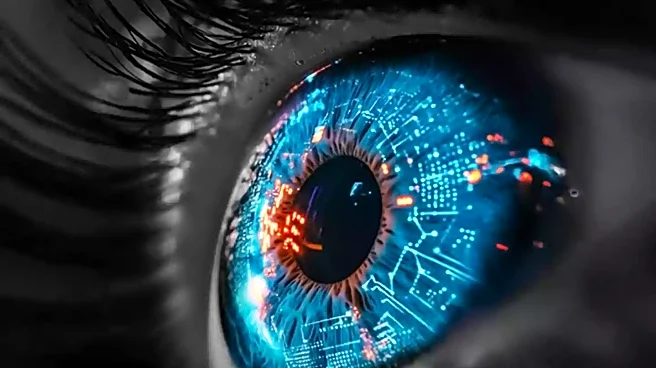What is the story about?
What's Happening?
A recent study conducted at the Royal Victoria Eye and Ear Hospital in Dublin, Ireland, has demonstrated the effectiveness of ultra-wide field imaging (UWFI) in detecting peripheral retinal breaks. The retrospective analysis included 336 peripheral retinal breaks in 275 eyes of 238 patients, all of whom underwent pre-operative UWFI using Optos California equipment. The study found that UWFI detected 83% of breaks, with accuracy increasing to 96.9% when peripheral steered imaging was used. The sensitivity of UWFI was notably higher for temporal and nasal breaks compared to superior and inferior ones, and for breaks located posterior to or at the equator compared to those anterior to it. The study concluded that UWFI is a valuable tool for screening and documenting retinal pathology, although it does not replace the need for a careful, dilated clinical examination.
Why It's Important?
The findings of this study are significant for the field of ophthalmology, as they highlight the potential of UWFI to enhance the detection and treatment of retinal breaks. This technology could improve patient outcomes by allowing for more accurate diagnosis and timely intervention. The increased sensitivity of UWFI, particularly with peripheral steered imaging, suggests that it could be a powerful adjunct to traditional clinical examinations. This could lead to more efficient use of resources in eye care facilities and potentially reduce the need for invasive procedures. The study underscores the importance of integrating advanced imaging technologies into routine clinical practice to improve diagnostic accuracy and patient care.
What's Next?
The study suggests that further research could explore the integration of UWFI into standard clinical protocols for retinal examinations. Eye care professionals may consider adopting UWFI as part of their diagnostic toolkit, particularly for patients at risk of retinal breaks. Additionally, the development of guidelines for the optimal use of UWFI in clinical settings could enhance its utility and effectiveness. As technology continues to advance, there may be opportunities to refine imaging techniques and improve sensitivity even further, potentially leading to new standards in retinal care.
Beyond the Headlines
The study raises important considerations about the role of technology in healthcare and the balance between technological advancements and traditional clinical skills. While UWFI offers significant benefits, it also highlights the ongoing need for skilled clinical examination. The integration of technology into healthcare practices must be carefully managed to ensure that it complements rather than replaces essential clinical skills. This study contributes to the broader discussion on how best to leverage technology to improve patient outcomes while maintaining high standards of clinical care.
AI Generated Content
Do you find this article useful?

















